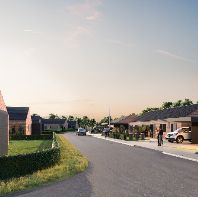Price growth in London continues to outperform the wider UK market average, with 2% price growth expected this year across Greater London and a 5% increase anticipated for the Prime Central London Market, according to Jones Lang LaSalle. This compares to continued deteriorating values in the Midlands and North of England, where house prices are set to fall by 2% during 2011.
James Thomas, Head of Residential Investment and Development at Jones Lang LaSalle, said: "London is being supported by international capital and year-end bonus money. Foreign capital has been flowing into London's residential market since sterling started to weaken in the second half of 2008.
"This has been bolstered even further since the start of the year as geopolitical unrest across Africa and the Middle East has intensified, illustrating how London is perceived to be a 'safe-haven' for investment. Likewise, property market cooling measures across markets in Asia have served to further concentrate outward investment on central London."
As price growth in regional markets outside London and the south of the UK continues to decline, this two-tier market shows no sign of synchronizing, and the dynamics and development of these markets remain polarized. More than a dozen regional centers rely on the public sector for more than one-third of all employment; whereas London's dependence is closer to one-fifth.
Looking at the UK housing market more generally, weak lending and pressure on limited disposable income continues to dissuade would-be domestic buyers. Transaction levels are down by more than one-quarter against the long-term average. Throughout 2011 Jones Lang LaSalle expects volumes and price growth to remain flat, with more risk on the downside.
Thomas continued: "The market remains highly asset specific and price sensitive. There are equity-rich investors looking to enter the market. However, the polarization between prime assets and mainstream housing remains stark. Most housing market stakeholders remain risk averse: speculative, debt-dependent schemes in fringe locations are, on the whole, stagnant. Neither banks nor buyers are of the view that this segment of the market will recover quickly."
Discussing supply and demand dynamics, Rob Bruce, Head of Residential Research at Jones Lang LaSalle, said: "Seasonally, the start of the year is typically a busy time across the residential sector. However this January new buyer enquiries and new instructions continued to trend down. As a result of weakening demand, the average time on the market has risen by more than two weeks during the last nine months, according to Hometrack. Similarly, with a lack of competition for properties, the gap between asking price and achieved price is growing. On average 91.9% of the asking price is being achieved."
Source: Jones Lang LaSalle















